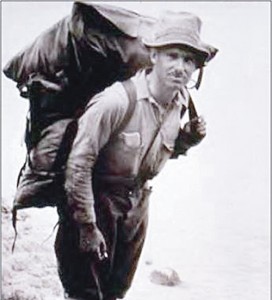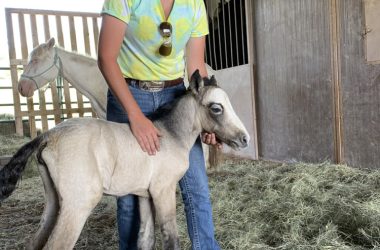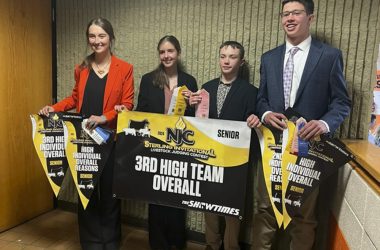
Two factors affected its development.
First, expanded pressure for access to the natural resources provided by the public land — extractive, scenic or otherwise — and the responsibility of federal conservation agencies like the U.S. Forest Service to account for the variety of demands.
Second, the evolution of a modern environmental movement that conceived of America’s public lands system as a national domain — owned by all Americans — and demanded that the federal government administer it accordingly, primarily for the purposes of outdoor recreation.
Combined, these two trends were responsible for the passage of the Wilderness Act in 1964, which provided a legal definition for wilderness, outlined the ways in which it could be managed and dictated the terms through which it could continue to grow.
Following his time at Trappers Lake, Carhart continued to work toward integrating national forest recreation with the modern world. Chief among his achievements included assisting in the development of the Squirrel Creek Recreation District on the San Isabel National Forest in southern Colorado and surveying portions of what ultimately became the Boundary Waters Canoe Area in Minnesota’s Superior National Forest.
Yet the Forest Service never embraced outdoor recreation to the extent that Carhart would have liked. For instance, although the Forest Service halted its plans to construct summer homes and roads around Trappers Lake, it did not implement Carhart’s conceptions of wilderness recreation in the time being.
Frustrated by the perceived slowness in which the Forest Service accommodated motor tourists in the backcountry, Carhart resigned from the agency in frustration in December 1922.
It may be better to describe the Forest Service’s application of the wilderness idea as deliberate rather than slow, however. The agency believed it had the authority to select parts of the national forests for the purposes of outdoor recreation and wilderness preservation, but only if such a designation did not infringe upon other forest uses, namely forage, timber, and water.
The results were sporadic and limited to specific, remote areas.
In 1924, following the recommendations of Aldo Leopold, the Forest Service set aside parts of the Gila National Forest in New Mexico as its first official wilderness area. By 1929, the Forest Service issued Regulation L-20, which defined two types of wilderness areas that the agency could establish: research reserves, or places deemed significant for scientific purposes, and primitive areas, which prioritized outdoor recreation and banned the use of motorized vehicles.
The Flat Tops, which is the series of plateaus and broad valleys that provided the backdrop for Trappers Lake, was among these places when the Forest Service announced the creation of the “Flat Tops Primitive Area” in 1932.
However, the agency continued to regulate forage, timber and water use in these places if the claims to those resources predated its wilderness designation. Thus, livestock grazing continued in the Flat Tops and other national forest primitive areas. Trappers Lake itself remained exempt from primitive status because the Bureau of Reclamation had previously selected it as a possible site for hydropower and water storage (a claim that the BuRec did not relinquish until 1964).
For the Forest Service, then, wilderness could only exist within the confines of a multiple-use construct that privileged the demands for grass, lumber and water before recognizing requests for recreation.
If the modern wilderness idea originally existed amid administrative discretion and multiple use, it took the work of an organization devoted solely to the preservation of wilderness in response to continued development on public lands to transform national forest primitive areas into a wilderness system that could transcend the national forests and apply to other parts of the American landscape.
Members of the Wilderness Society were the most responsible for this transformation. Upon its inception in 1935, the Wilderness Society made wilderness preservation and recreation its primary goal.
Meanwhile, the threats against wilderness multiplied rapidly. Automobiles and roads remained the chief culprit. Road construction and other infrastructure developments were among the most effective work-relief programs implemented by the New Deal during the 1930s, but they came at the expense of wilderness.
In turn, these projects set the stage for even greater access to the public lands by motor tourists following the Second World War. There were also groups and federal agencies who sought to exploit natural resources on the public lands at the expense of outdoor recreation or wilderness, the most notable of these being the Bureau of Reclamation’s failed attempt to construct a series of dams along the Green and Yampa rivers in Dinosaur National Monument during the early 1950s.
The Wilderness Society and other environmental organizations quickly mobilized against any activity that threatened to destroy the scenic or recreational values of the public lands.
The modern wilderness idea, particularly its emphasis on preserving some areas from modern developments such as roads and dams, informed part of their argument. More important, however, was the insistence that all Americans owned a stake in the public lands and, as a result, should receive a say in its management before it was subject to further exploitation.
In other words, the public lands were a national domain maintained by federal conservation agencies like the Forest Service for the benefit of all Americans rather than for select groups such as lumberers, ranchers or dam builders.
Because the majority of Americans enjoyed public lands through outdoor and wilderness recreation, defenders of the national domain insisted upon prioritizing these activities above other land uses such as livestock grazing, timber extraction or water storage, which stood in stark contrast to the Forest Service’s original approach to wilderness.
This concept of the national domain went on to inform the language of the Wilderness Act of 1964, its purpose being “(to) establish a National Wilderness Preservation System for the permanent good of the whole people….”
Upon its passage, wilderness received the official definition as a place “where the earth and its community of life are untrammeled by man, where man himself is a visitor who does not remain.” Such places were set aside primarily “for the use and enjoyment of the American people” and, for those reasons, the law banned the construction of roads and the use of motorized vehicles within designated wilderness areas.
The act also stipulated additional criteria for wilderness, all of which applied only to lands currently administered by the federal government. Such places had to be “affected primarily by the forces of nature,” provide “outstanding opportunities for solitude,” be at least 5,000 acres in size, and “contain ecological, geological or other features of scientific, educational, scenic or historical value.”
With these conditions in place, the Wilderness Act established two important legacies.
First, it offered flexibility by providing opportunities for future growth and the administration of wilderness under a variety of contexts. The act immediately protected 54 wilderness areas (9.1 million acres in all) situated within the national forests, which was a testament to the Forest Service’s initial attempts to establish primitive areas under its L-20 regulations
Yet the law also initiated a 10-year review period, during which time the Department of Agriculture and the Department of the Interior could investigate and recommend other lands for wilderness status. Thus, the wilderness idea was poised to expand to other portions of the national domain, including areas administered by the Bureau of Land Management, the Fish and Wildlife Service and the National Park Service.
The second important legacy of the Wilderness Act was that the review process would be public. In other words, the creation of new wilderness areas would be subject to the politics of multiple-use and the national domain.
In many cases, other uses such as livestock grazing preceded a landscape’s recommendation for wilderness status. As a compromise, the Wilderness Act included provisions that allowed such uses to continue as long as they conformed to the law’s stipulations regarding wilderness, recreation and the prohibition of roads and motorized vehicles.
In addition, during the investigation of a proposed wilderness area, the law required that public hearings be held in the vicinity to allow any interested individual to comment on how a wilderness designation might affect their stake in the national domain.
Finally, in perhaps the ultimate expression that wilderness should be for the benefit of all people, the final decision over whether to make an addition to the national wilderness system rested with Congress, not with the president or an agency like the Forest Service.
Ultimately, the Wilderness Act did not end the debate over wilderness. Instead, it provided a new framework.
Wilderness received the definition as a place of ecological or scenic value “where man himself is a visitor who does not remain.” Wilderness also became a political process that required dialog among a variety of individuals, each of whom had their own stake in the national domain.
How this process affected Trappers Lake and the continued evolution of the wilderness concept will be the subject of my final article.
By Matt Pearce
Special to the Herald Times




















